 |
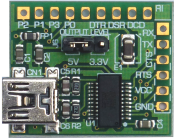
|
|
The FT231X Break-out Board is a USB to UART (serial) converter board, featuring the latest FT231X generation technology from FTDI Chip (makers of the extremely popular original FT232R). An on-board jumper allows selection between 3.3V or 5V communication levels. Besides for the expected RX and TX, the board also includes DTR, DSR, DCD, RTS, CTS and RI pins (as well as 4 general-purpose pins). |
|
|
|
 |
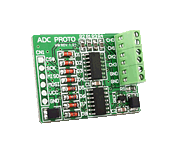
|
|
The ADC PROTO Board allows you to add A/D conversion feature to your prototype device. It includes a 12-bit ADC MCP3204 with 4 inputs and 4.096 Voltage Reference. The board can be used with all MCUs with SPI communication support. |
|
|
|
 |
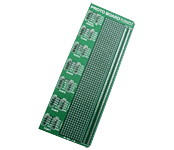
|
|
Adds a prototyping area to the EasyPIC6 Development System. |
|
|
|
 |
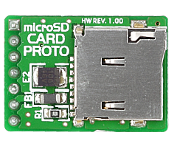
|
|
The microSD board features an microSD card slot used as a mass storage media for portable devices. Industry standard SPI interface ensures simple communication at high data rates. Use it for fast data acquisition or storing other data, like music, text files, videos and more. |
|
|
|
 |
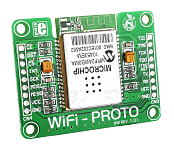
|
|
WiFi PROTO Board is a miniature, inexpensive wireless 2.4GHz 802.11b solution for your prototype. It carries the MRF24WB0MA Wi-Fi radio transceiver module with integrated PCB antenna. The board works with 3.3V only. |
|
|
|
 |
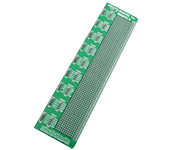
|
|
The BIGPIC6 PROTO Board is a high quality PCB prototype board. It solves your prototype problems by offering a complete, cost-effective solution. Connect your BIGPIC6 development board to this board via an IDC10 connector. |
|
|
|
 |
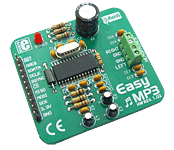
|
|
The EasyMP3 Board is an accessory board that includes an on-board MPEG audio layer 3 decoder VS1011e with SPI Interface. There is also an on-board screw terminal that enables easy connection with peripherals. |
|
|
|
 |
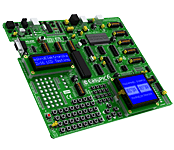
|
|
The EasyPIC6 is a full-featured development system for PIC microcontrollers. It comes with the PIC16F887 microcontroller. The system includes a USB 2.0 programmer with mikroICD and many peripheral modules such as COG, port expander, MENU, 4x4 keypad, etc.
LCDs purchased seperately. |
|
|
|
 |
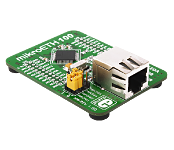
|
|
The mikroETH 100 is a 100Mbit ethernet controller. It features Microchip's ENC624J600 10/100 Base-T Ethernet controller with integrated MAC & PHY, hardware cryptographic security engines and factory preprogrammed unique MAC address. Communication is done using an 8-bit or 16-bit multiplexed or demultiplexed parallel interface. The board is designed to operate at 3.3V. |
|
|
|
 |
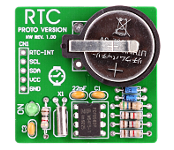
|
|
RTC PROTO board enables you to use a real-time-clock and calendar in your applications. It features an PCF8583 that keeps track of the current time even when the microcontroller is turned off. The real-time clock is driven by a special battery that is not connected to the normal power supply. It is easily connected to standard prototyping boards. |
|
|
|
 |
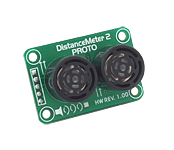
|
|
The Distance Meter Board will help you to measure distance using any of development boards from mikroElektronika. |
|
|
|
 |
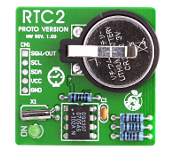
|
|
The RTC2 Board features the DS1307 serial real-time clock (RTC). It is a low-power, full binary-coded decimal (BCD) clock/calendar plus 56 bytes of NV SRAM. Timekeeping operation continues even when the power supply goes off as it is then powered from the backup supply. It is easily connected to standard prototyping boards. The board comes with the appropriate schematic and software examples. |
|
|
|
 |
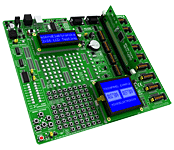
|
|
The BIGPIC6 development system supports 64- and 80-pin PIC microcontrollers. It comes with the PIC18F8520 microcontroller. The system features a USB 2.0 programmer with mikroICD and many peripheral modules such as port expander, MENU keypad, serial EEPROM etc.
LCDs purchased seperately. |
|
|
|
 |
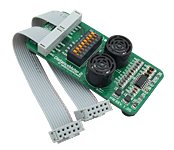
|
|
The Distance Meter Board will help you to measure distance using any of development boards from mikroElektronika. |
|
|
|
 |
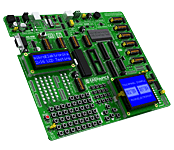
|
|
The EasydsPIC6 is a full-featured development system for 18-, 28- and 40-pin dsPIC30F devices. The system features a USB 2.0 programmer with mikroICD and many peripherals such as Piezo speaker, COG, port expander, MENU and 4x4 keypads etc.
LCDs purchased seperately. |
|
|
|
 |
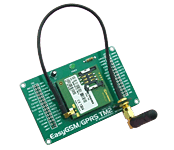
|
|
The EasyGSM/GPRS TM2 is a development board for the TM2 module from Teltonika. This module is small and light. It enables your devices to be connected to the GSM/GPRS network. An antenna is delivered with the board to provide a better quality of signal.
Module / antenna purchased separately. |
|
|
|
 |
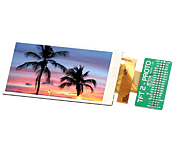
|
|
The TFT2 - PROTO Board comes with Color TFT display (4.2 inch, 432x240 pixel). There are connection pads available on-board so you can easily connect it to your prototype device. Connections are described via on-board marks for easier connecting. |
|
|
|
 |
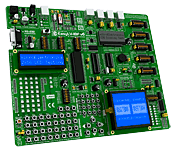
|
|
The EasyLV-18F v6 development system supports 40-, 28- and 20-pin PIC18J and PIC18K microcontroller families from Microchip. It comes with a PIC18F45K20. The system features a USB 2.0 programmer with mikroICD and many peripheral modules such as Serial RAM, EEPROM, COG Display, etc.
LCDs purchased seperately. |
|
|
|
 |
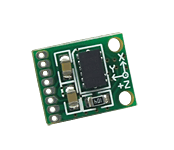
|
|
The Accel SPI Board enables you to measure acceleration with a complete 3-axis acceleration tool ADXL345 provided on-board. This tool measures static, as well as dynamic acceleration resulting from motion or shock |
|
|
|
 |
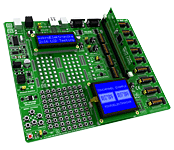
|
|
The LV18F v6 development system supports 44-, 64-, 80- and 100-pin PIC18FxxJxx microcontrollers. It comes with a PIC18F87J60. The system features a USB 2.0 programmer with mikroICD and many peripheral modules such as MENU keypad, serial RAM, serial EEPROM etc.
LCDs purchased seperately. |
|
|
|
 |
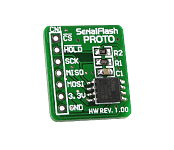
|
|
If your prototype device needs more memory space then the SerialFlash PROTO Board is an excellent choice. The on-board M25P80 circuit provides additional 8Mbit flash memory via a Serial Peripheral Interface (SPI). Ready-to-use examples comes with board. |
|
|
|
 |
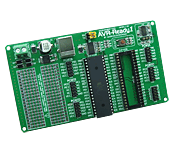
|
|
The AVR-Ready1 Board is a prototype board for 40-pin AVR microcontrollers. It features a prototyping area, MikroElektronika-standard IDC10 headers for easily connecting add-on boards, and a USB connector with the FT232R USB to serial UART interface device.
Note: Microcontroller not included |
|
|
|
 |
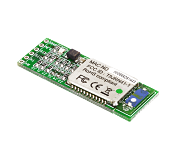
|
|
BlueTooth Stick Board offers low power, highly economic Bluetooth radio for adding wireless capability to your prototype device. On-board RN-41 module with UART protocol is easy and simple to use. Also board can operate up to 100m distance and it is compliant with specification |
|
|
|
 |
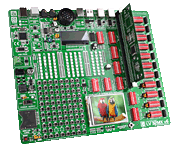
|
|
The LV-32MX v6 is a full-featured development system that supports 64- and 100-pin PIC32MX microcontrollers from Microchip. The board features a fast USB 2.0 programmer and many peripherals such as TFT color display 320x240 with touch screen, audio codec, MMC/SD, serial Flash, etc. |
|
|
|
 |
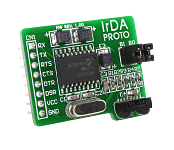
|
|
The IrDA PROTO Board allows you to connect your prototype board to IrDA wireless network by using the MCP2155 driver and TFDU4101 diode. As soon as you establish connection, data can be sent/received via IrDA wireless network. |
|
|
|
 |
|
|
 |
|
|
 |
|
|
 |
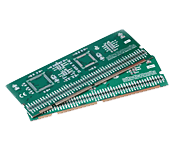
|
|
Supports the PIC32MX3XXH, PIC32MX4XXH, PIC32MX575F256H, PIC32MX575F512H, PIC32MX675F512H, PIC32MX695F512H and PIC32MX795F512H microcontrollers. |
|
|
|
 |

|
|
Supports the PIC32MX3XXL, PIC32MX4XXL, PIC32MX575F256L, PIC32MX575F512L, PIC32MX675F512L, PIC32MX695F512L and PIC32MX795F512L microcontrollers. |
|
|
|
 |
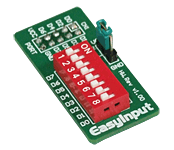
|
|
The EasyInput Board is an effective and low-cost board for adjusting input levels by using a high-quality DIP switch. It saves prototype board space and allows increased circuit density. It is connected to a prototype device via an IDC10 connector. |
|
|
|
 |
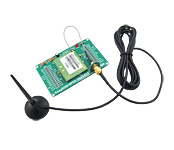
|
|
The EasyGSM/GPRS is a development board for the SIM340Z module from Simcom. The SIM340Z provides GSM/GPRS performance for voice, SMS, Data and Fax in a small form factor. An antenna is delivered with the board to provide a better quality of signal.
Module / antenna purchased separately. |
|
|
|
 |
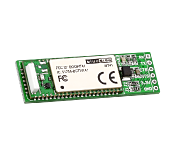
|
|
The BlueTooth 2 Stick board offers low power, highly economic wireless capability to your products. The on-board WT41 bluetooth module offers an impressive 1000 meters range between two bluetooth modules. It uses an easy and simple UART protocol for communication. |
|
|
|
 |
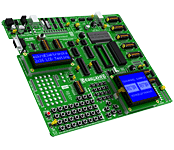
|
|
EasyAVR6 is a full-featured development system for AVR microcontrollers. The system features a fast USB 2.0 programmer and many peripheral modules such as COG, port expander, MENU and 4x4 keypads etc.
LCDs purchased seperately. |
|
|
|
 |
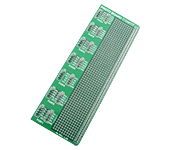
|
|
The EasyAVR6 PROTO Board is a high quality PCB prototype board. It solves your prototype problems by offering a complete, cost-effective solution. Connect this board to your prototype board via an IDC10 connector. |
|
|
|
 |

|
|
The ARMFlash is a USB 2.0 programmer used for programming ARM microcontrollers from NXP (former Philips). Unlike programmers whose operation is based on bootloaders, this one provides the external programming of microcontrollers so that the entire memory is available. |
|
|
|
 |

|
|
The PSoCprog2 is a USB 2.0 programmer used for programming PSoC MCUs from Cypress. Unlike programmers whose operation is based on bootloaders, this one provides the external programming of microcontrollers so that the entire memory is available. |
|
|
|
 |

|
|
All MikroElektronika software normally comes with a key-file license. This license locks the software to the particular machine which the software is installed on, and needs to be replaced (free of charge) in the event of a hard-drive format.
The USB dongle allows the software to be used on any computer, simply by porting the dongle between computers. Additionally, it eliminates the complications of re-licensing the software in the event of a hard-drive format.
Please note that changing to a USB dongle at a later stage will incur an additional cost.
USB dongle stock is immediately available for:
mikroC - PIC, PIC24/dsPIC, PIC32, AVR
mikroBasic - PIC, PIC24/dsPIC, PIC32
Visual GLCD
Weight includes DVD, case and documentation. |
|
|
|
 |
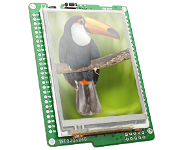
|
|
mikroMedia for ATMEGA is a compact, high-quality, multimedia development platform for the ATMEGA1280. It has numerous on-board modules which allow you to write multimedia applications. This board can be used for both development or as a final product. |
|
|
|
 |
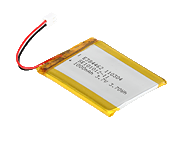
|
|
3.7V, 1000mAh Lithium-Polymer battery. It comes with a standard connector, compatible with MikroMedia boards.
Size: 63 x 44 x 4mm. |
|
|
|
 |

|
|
Intelligent
3.2" TFT display with 400x240px resolution and resistive touch-screen, featuring the PICASO controller as well as a number of other features. |
|
|
|
 |
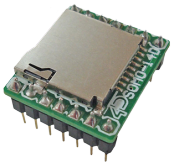
|
|
The SOMO-14D is a tiny audio module which can play back pre-stored audio files such as voice and music from a FAT16-formatted microSD memory card. The module interfaces with a microcontroller via a simple serial interface, with sommands such as play, pause, stop and volume. The compact 14pin drop-in-module takes up very minimal board space and is a quick and easy solution for adding embedded audio to your application. |
|
|
|
 |
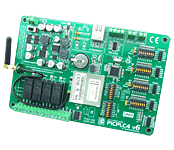
|
|
The PICPLC4 v6 is a PLC system used to develop industrial, home and office control devices. The system features GSM/GPRS communication, 4 relays, RS232, Ethernet, real-time clock, etc.
GSM/GPRS module/antenna purchased separately. |
|
|
|
 |

|
|
BITalino is a cost-effective kit for capturing physiological bio-signals. Sensors include EMG (muscle activity), EDA (skin activity / moisture), ECG (heart-rate), LUX (for tracking blood volume pulse data when used in conjunction with a light source) and accelerometer. The kit includes the BITalino Board, 3-lead cable for EMG / ECG, 2-lead cable for EDA, 5 x pre-gelled electrodes and a 1300mAh LiPo battery. Free computer software (OpenSignals) is included for logging and visualising data, and various programming APIs are also available. |
|
|
|
 |
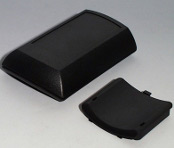
|
|
OKW part number B7010109 - please click here for more information. |
|
|
|
 |
|
|
 |
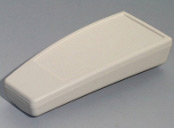
|
|
OKW part number A9067117 - please click here for more information. |
|
|
|
 |
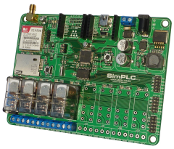
|
|
The SimPLC is a neat and compact board featuring up to 8 relays, a GSM/GPRS module, up to 8 opto-coupled inputs, RTCC (real-time calendar/clock) and USB. Develop your own code to turn it into an alarm system, remote control/monitoring device, or any other application you may find for it!
Note: This original SimPLC has now been replaced by the SimPLCv2. |
|
|
|
 |
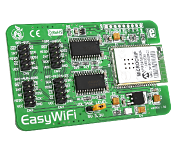
|
|
EasyWiFi Board is a all-in-one wireless 2.4GHz 802.11b solution with high-speed voltage translators, making it suitable for most microcontroller architectures (the board can work with 3.3V or 5V systems). It carries the MRF24WB0MA Wi-Fi radio transceiver module with integrated PCB antenna, and uses a 4-wire SPI interface or a UART interface for communication.
An IDC10 cable is included with the board. |
|
|
|
 |
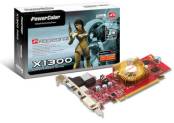
|
|
Please click here for more information.
1 item available - used, in original packaging. |
|
|
|
 |
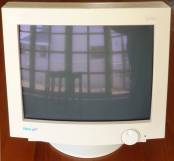
|
|
1 item available - used. |
|
|
|
 |
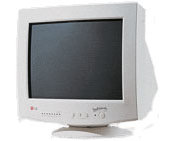
|
|
1 item available - used. |
|
|
|
 |
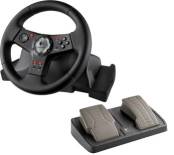
|
|
Please click here for more information.
1 item available - used, in original packaging. |
|
|
|
 |
|
|
 |

|
|
The GPS Click L10 is an accessory board in the mikroBus form factor. It's a compact solution for adding GPS functionality to your device. It features the Quectel L10, high performance MTK positioning engine. The board can be interfaced with a microcontroller through a UART or I2C connection, or data can be acquired using a PC application through the USB connection. The board features a connector compatible with active and passive antennas, and can only operate on a 3.3V power supply. |
|
|
|
 |
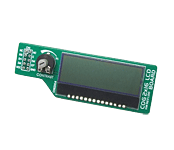
|
|
The COG (Chip-on-Glass) 2x16 LCD Board can be easily connected to a development board or prototype device. There is a potentiometer for display contrast adjustment provided on the board. |
|
|
|
 |
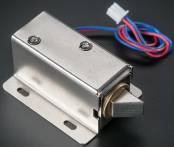
|
|
Solenoids are basically electromagnets: they are made of a big coil of copper wire with an armature (a slug of metal) in the middle. When the coil is energized, the slug is pulled into the center of the coil.
This solenoid is durable and is designed for a small cabinet/door/safe. It has a slanted cut armature and a mounting bracket. The armature (metal slug) of the solenoid can be rotated 90, 180 or 270 degree to suit the position of the door just like a normal home door lock would. |
|
|
|
 |

|
|
Camera click carries OV7670-VL2A, a low voltage CMOS image sensor, connected to an onboard FT900 MCU through a parallel camera interface. The FT900 in turn outputs the camera image to the target board microcontroller through the mikroBUS SPI interface (CS, SCK, MISO, MOSI). An additional RDY pin (INT) signals the camera’s status. Camera click combined with a 32-bit target board MCU will enable you to stream QCIF resolution video (176 x 144 px). Increased processing power and storage capabilities will get you better results (the maximum resolution of the OVO7670 sensor aboard camera click is VGA, 640x480). With 8-bit MCUs, camera click is best used for rendering static images, or for specific applications where a few frames per second are enough. |
|
|
|
 |
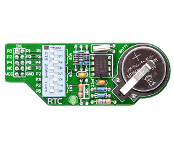
|
|
RTC board enables you to use a real-time-clock and calendar in your applications. It features an PCF8583 that keeps track of the current time even when the microcontroller is turned off. The real-time clock is driven by a special battery that is not connected to the normal power supply. The board serves as an extension of development boards which need real time data for their operation but can also be used as a part of some other devices if required. It comes with the relevant schematic and many ready-to-use examples. |
|
|
|
 |
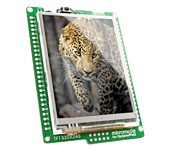
|
|
mikroMedia for Stellaris M3 is a compact, high-quality, multimedia development platform for the LM3S9B95 ARM Cortex M3 device. It has numerous on-board modules which allow you to write multimedia applications. This board can be used for both development or as a final product. |
|
|
|
 |

|
|
MINI-M4 for Stellaris is a small ARM Cortex-M4 development board containing the LX4F320H5QR microcontroller. It is pin compatible with the PIC16F887 and PIC18(L)F45K20 microcontrontrollers and it perfectly fits into a standard DIP40 socket. The board is equipped with a 16MHz SMD crystal oscillator, as well as a 32.768KHz crystal which can be used for the internal RTCC module. It has a reset button and three signal LEDs. The board comes preprogrammed with fast USB HID bootloader, so no external programmers are needed for development. It operates on a 3.3V power supply. An on-board voltage regulator allows the board to be powered directly from the USB cable. |
|
|
|
 |
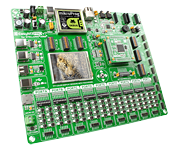
|
|
EasyMx PRO v7 for Stellaris ARM is a development board for Stellaris ARM Cortex-M3 32-bit devices. It contains many on-board modules necessary for the development of a variety of applications; including multimedia, Ethernet, USB, CAN and more. |
|
|
|
 |
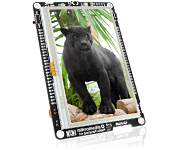
|
|
A large 4.3" TFT Touch Screen and over 20 on-board modules connected to a high-performance Stellaris ARM Cortex-M4 microcontroller with on-chip FPU and DSP. |
|
|
|
 |
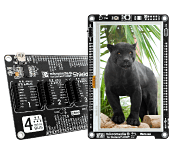
|
|
Add this item to your basket in order to receive a discount when purchasing a mikroMedia Plus for Stellaris together with it's shield. |
|
|
|
 |
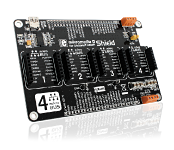
|
|
Expand the base functionality of your mikromedia+ for Stellaris with a shield that features 4 mikroBUS host sockets. Easily add among 50+ Click boards; including WiFi, ZigBee, RS485, and other communication, measurement boards or sensors. The shield also provides a physical layer for CAN interface, as well as a USB-UART module. Two separate 1x26 pin female sockets come with the board. |
|
|
|
 |
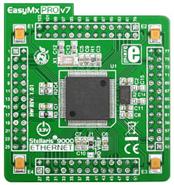
|
|
Note: Image is representative of product range - individual products may differ slightly. |
|
|
|
 |
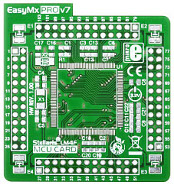
|
|
Note: Image is representative of product range - individual products may differ slightly. |
|
|
|
 |
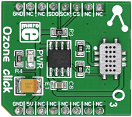
|
|
Ozone click is a mikroBUS add-on board with a MiCS-2614 compact MOS sensor for ozone (O3) detection. Its detection range is from 10-1000ppb. It's a small(5 x 7 x 1.55mm) MEMS sensor consisting of a micro machined diaphragm with an embedded heating resistor and the sensing layer on top.
The sensor outputs an analog voltage, which is converted by the onboard MCP3201 12-bit ADC converter.
Ozone click communicates with the target MCU through the mikroBUS SPI interface (CS, SCK, MISO). The board is designed to use a 5V power supply only. |
|
|
|
 |
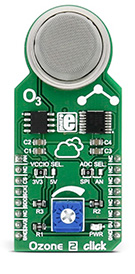
|
|
Ozone 2 click carries an MQ131 sensor for Ozone (O3). The sensor outputs an analog voltage, which is converted by the onboard MCP3551 22-bit ADC converter or it is sent to the microcontroller via AN pin on the mikroBUS™, depending on the position of ADC SEL. jumper. The click is designed to run on 5V power supply.
It communicates with the target microcontroller over SPI interface or AN pin on the mikroBUS™ line. |
|
|
|
 |
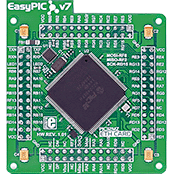
|
|
This particular EasyPIC FUSION v7 ETH MCUcard contains the PIC32MZ2048EFH144 microcontroller with on-chip peripherals. It's a great choice for both beginners and professionals. After testing and building the final program, this card can also be taken out of the board socket and used in your final device. |
|
|
|
 |
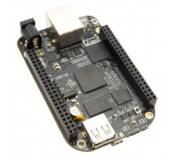
|
|
The BeagleBone Black is a tiny, low-cost, internet enabled, open source and community-supported development platform which runs a variety of OS including Debian, Angstrom and Ubuntu Linux as well as Android. Simply connect the board to your computer using the included USB cable to get started using the pre-loaded guides. |
|
|
|
 |

|
|
The 4DCAPE-43T is a 4.3" TFT display, with 480x272px resolution and resistive touch-screen, specifically designed for the Beagle Bone Black. |
|
|
|
 |

|
|
WiFi 5 click is a mikroBUS add-on board with Gainspan's GS1500M ultra low-power Wi-Fi module with a PCB trace antenna (external IPX antenna connector also available). GS1500M supports Wi-Fi PHY speeds of up to 72.2mbps. The module is fully compliant with both IEEE 802.11b/g/n as well as with the requirements of the Wi-Fi alliance. Security features include support for WEP/WPA/WPA2, Adhoc and WPS (Wi-Fi protected setup). On the hardware side, the GS1500M module comprises two ARM7 44MHz chips (one for the radio, the other for applications), as well as on-chip Flash and SRAM. WiFi 5 click communicates with the target MCU through the mikroBUS UART interface (TX, RX), with additional functionality provided by RST and Prog pins (the latter in place of default mikroBUS AN pin). |
|
|
|
 |
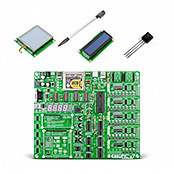
|
|
EasyPIC v7 is all about connectivity. Having four different connectors for each port, you can connect accessory boards, sensors and your custom electronics easier then ever before. To make your life even easier you will get all necessary accesories in this great KIT.
List of included accessories:
- Graphic LCD 128x64 with TouchPanel
- Character LCD 2x16 with blue backlight
- DS1820 Temperature Sensor
- Plastic Pen for TouchPanel. |
|
|
|
 |
_sm.jpg)
|
|
Buy 4G LTE click and get PIC clicker for FREE! Ideal combo for your project. |
|
|
|
 |
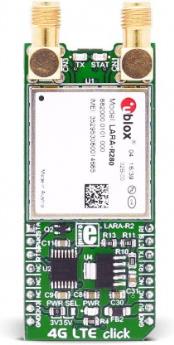
|
|
4G LTE-APJ click is an LTE Cat 1 / UMTS multimodecellular network solution, featuring the compact LARA-R2 series modem from u-blox. This module supports up to three LTE bands and one UMTS band. It also features a full range of options for the high speed cellular networking and communication, such as the network indication, full embedded TCP/UDP stack, HTTP and HTTPS transfer protocols, IPv4/IPv6 dual-stack support, secondary antenna for the RX diversity, antenna detection, jamming signal detection, embedded TLS 1.2 protocol for the improved security and more. 4G LARA click can achieve data rates up to 10.3 Mbps/5.2 Mbps (downlink/uplink).
|
|
|
|
 |
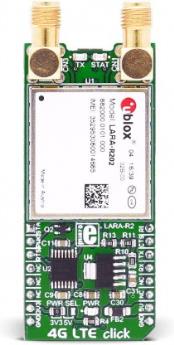
|
|
4G LTE-AT&T click is an LTE Cat 1 / UMTS multimodecellular network solution, featuring the compact LARA-R2 series modem from u-blox. This module supports up to four LTE bands and up to two UMTS bands. It also features a full range of options for the high speed cellular networking and communication, such as the network indication, full embedded TCP/UDP stack, HTTP and HTTPS transfer protocols, IPv4/IPv6 dual-stack support, secondary antenna for the RX diversity, antenna detection, jamming signal detection, embedded TLS 1.2 protocol for the improved security and more. 4G LARA click can achieve data rates up to 10.3 Mbps/5.2 Mbps (downlink/uplink). |
|
|
|
 |
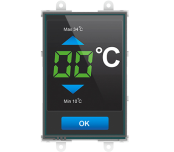
|
|
The Picadillo-35T is a 3.5", 320x480 resolution (Half VGA), embedded display module with resistive touch and featuring the Microchip PIC32MX795F512L 32-bit microcontroller. The board has Arduino/chipKIT style headers for easy attachment of shields, and is compatible with the UECIDE, MPIDE and MPLAB X Programming IDE's. The 3.5" display together with lots of GPIO make this board a neat all-in-one solution for applications requiring a GUI. |
|
|
|
 |
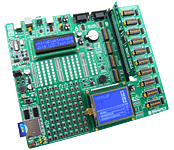
|
|
The BIGdsPIC6 is a development system for 64- and 80-pin dsPIC30F devices. Board is delivered with a MCU card that contains dsPIC30F6014A. The system features a USB 2.0 programmer with mikroICD and many peripheral modules such as Piezo speaker, EEPROM, FTDI, RTC, CAN, etc.
LCDs purchased seperately. |
|
|
|
 |
|
|
 |
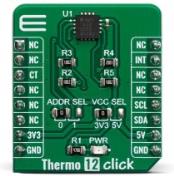
|
|
Thermo 12 click is a Click board™ equipped with the sensor IC, which can digitize temperature measurements between -40°C and +150°C so that the temperature measurement data can be processed by the host MCU. Thermo 12 click provides an accuracy of ±0.2°C in the range from -10°C to +85°C. The sensor used on this Click board™ has a great combination of features that make it a perfect choice for any temperature measurement application: ultralow temperature drift, low power consumption, programmable interrupt engine, compact sensor size, interrupt and critical temperature output pins, and more. The sensor itself requires almost no external components, which simplifies the design, reducing the cost and cutting the time to market.
Thermo 12 click click is supported by a mikroSDK compliant library, which includes functions that simplify software development. This Click board™ comes as a fully tested product, ready to be used on a system equipped with the mikroBUS™ socket.
|
|
|
|
 |
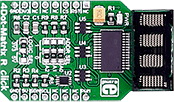
|
|
4Dot-Matrix R click allows you to display 4 characters of 5x7 dot size. The click is designed to run on either 3.3V or 5V power supply. It communicates with the target microcontroller over I2C interface, with additional functionality provided by the following pins on the mikroBUS™ line: RST, CS, PWM. |
|
|
|
 |
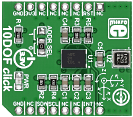
|
|
10DOF click is a mikroBUS add-on board for enhancing hardware prototypes with 10DOF functionality (10 degrees of freedom). The click board carries two modules from Bosch: BNO055, a 9-axis absolute orientation sensor and BMP180, a digital pressure sensor. The BNO055 contains 3 sensors: a 3-axis 16-bit gyroscope, a 14-bit 3-axis accelerometer, and a 3-axis magnetometer, as well as a 32-bit ARM Cortex-M0 MCU with Bosch Sensortec sensor fusion algorithms. The pressure sensor is based on piezo-resistive technology, enabling high accuracy, linearity and long term stability. 10DOF click communicates with the target board MCU through the mikroBUS I2C interface (SCL, SDA), with additional functionality provided by INT and RST pins. Designed to use a 3.3V power supply only. |
|
|
|
 |
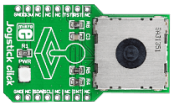
|
|
Joystick click is a smart navigation key concept based on contactless, magnetic movement detection. It features the AS5013 Hall IC as well as a N50P105 miniature magnetic joystick module. The AS5013 includes five integrated Hall sensing elements, which monitor the movement of the magnet incorporated into the joystick, and it directly outputs the X and Y coordinates via I2C. An integrated mechanical push button is also built into the joystick. The board uses 3.3V logic and power supply only. |
|
|
|
 |
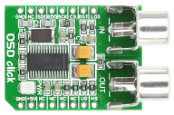
|
|
OSD Click features the MAX7456 single-channel monochrome OSD module with integrated EEPROM memory as well as two RCA sockets. It is used to create on-screen menus and other video overlays - such as custom graphics, company logos, time and date, etc - using 256 user-programmable characters or pictographs. It is NTSC and PAL compatible and displays up to 16 rows x 30 characters. The MAX7456 has an internal sync generator. OSD Click communicates with the target microcontroller via mikroBUS SPI (SDI, SDO, SCK, CS#), RST, LOS, HSYNC and VSYNC lines. The board is designed to use a 5V power supply only. A green LED diode indicates the presence of power supply. |
|
|
|
 |

|
|
The RTC Click board is an accessory board in mikroBus form factor. It features the PCF8583 serial real-time clock (RTC). It is a low-power, full binary-coded decimal (BCD) clock/calendar. The board uses an I2C interface for communication and features a 3V/230mA lithium battery as a backup power supply, which ensures that timekeeping operation continues even when the main power supply turns off. The board is set to use the 3.3V mikroBus power supply by default, however soldering the PWR SEL SMD jumper to the 5V position enables it to be used with 5V mikroBus systems. |
|
|
|
 |
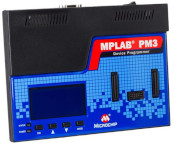
|
|
The MPLAB® PM3 Universal Device Programmer is easy to use and operates with a PC or as a stand-alone unit, and programs Microchip's entire line of PIC® devices as well as the latest dsPIC® DSC devices. When used standalone, data can be loaded and saved with the SD/MMC card (not included).
1 item available, used, in good condition |
|
|
|
 |
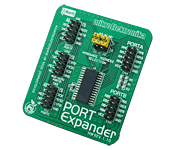
|
|
The Port Expander Board is an accessory board that includes a 16-bit I/O expander MCP23S17. This expander employs SPI(tm) clock up to 10 MHz. The board is ideal for expanding number of microcontroller pins on your prototype device. |
|
|
|
 |

|
|
Instead of keeping your wire jumpers jumbled up like a bowl of spaghetti, consider this pack of 140 wire jumpers in a nifty box for easy storage. 14 different lenghts of 22AWG wire all cut, stripped and pre-bent, 10 pieces of each of the following length: 2, 5, 7, 10, 12, 15, 17, 20, 22, 25, 50, 75, 100, and 125mm. A bigger box with 350 pieces is also available. |
|
|
|
 |
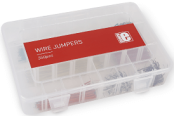
|
|
Instead of keeping your wire jumpers jumbled up like a bowl of spaghetti, consider this pack of 350 wire jumpers in a nifty box for easy storage. 14 different lenghts of 22AWG wire all cut, stripped and pre-bent, 25 pieces of each of the following length: 2, 5, 7, 10, 12, 15, 17, 20, 22, 25, 50, 75, 100, and 125mm. A more compact box with 140 pieces is also available. |
|
|
|
 |
|
|
 |

|
|
eINK click is an adapter for connecting eINK displays, with a 24pin ribbon cable. The eINK display sold with the click can retain the image even when the power is off. The click is designed to run on a 3.3V power supply. It communicates over SPI interface. |
|
|
|
 |
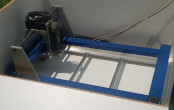
|
|
StepFour Basic 540 Desktop CNC Milling Machine
1 item available, used, in good condition |
|
|
|
 |
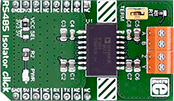
|
|
RS485 Isolator click is a RS485 communication isolator, and carries the ADM2682EBRIZ, a 5 kV rms signal and power isolated RS-485 transceiver. The click is designed to run on either 3.3V or 5V power supply. It communicates with the target microcontroller over UART interface, with additional functionality provided by the RST and CS pin on the mikroBUS™ line. |
|
|
|
 |
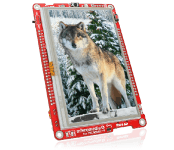
|
|
Smart device with a large 4.3" TFT Touch Screen, or a multimedia development board - it's up to you. The board features a powerful PIC32MX795F512L device and loads of on-board modules, making it a perfect choice for your projects. |
|
|
|
 |
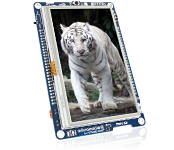
|
|
mikroMedia Plus for STM32 is a compact, high-quality development board featuring the fast STM32F407ZGT6 MCU and 4.3" TFT touch-screen. It is also packed with a number of other features such as USB, microSD Card, accelerometer, audio codec, and more. |
|
|
|
 |
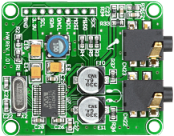
|
|
The Audio Codec Board - PROTO is a development tool for the WM8731 Audio Codec, ideal for use in embedded applications which require audio playback. The on-board Audio Codec WM8731 provides stereo line and mono microphone level audio inputs. This module also uses stereo 24-bit multi-bit sigma delta ADCs and DACs with oversampling digital interpolation and decimation filters. Stereo audio outputs are buffered for driving headphones from a programmable volume control. Line level outputs are also provided along with anti-thump mute and power up/down circuitry. The device is controlled via 2 wire (I2C) or 3 wire (SPI) serial interface. |
|
|
|
 |
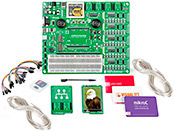
|
|
The essential development kit for all your graphic interface projects
Open the box full of wonders. Start development right away, everything you could need is there.
It's the perfect toolbox - the mikromedia workStation v7 is the best development environment for mikromedia boards – your stepping stone. The Visual TFT software and compiler license will launch you into full creativity mode; you don't need to worry about the code, the Visual TFT will generate it automatically in the background, you just concentrate on the design. |
|
|
|
 |
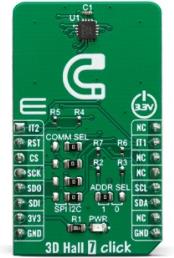
|
|
3D Hall 7 click is a very accurate, magnetic field sensing Click board™, used to measure the intensity of the magnetic field across three perpendicular axes. It is equipped with the AK09970N, a high sensitivity 3D magnetic sensor IC, from AsahiKASEI. This IC has a separate Hall sensing element on each axis, which allows a very accurate and reliable measurement of the magnetic field intensity in a 3D space, offering a basis for accurate positional calculations. The AK09970N magnetic sensor IC offers two industry-standard interfaces: both I2C and SPI communication protocols are supported by this IC. This sensor IC also features a powerful programmable interrupt engine with configurable polarity, switch event, and more.
3D Hall 7 click is supported by a mikroSDK compliant library, which includes functions that simplify software development. This Click board™ comes as a fully tested product, ready to be used on a system equipped with the mikroBUS™ socket.
|
|
|
|
 |
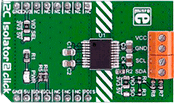
|
|
I2C Isolator 2 click provides I2C lines and power isolation for slave devices. It carries the ADM3260 dual I2C isolator with an integrated DC-to-DC converter. I2C Isolator 2 click is designed to run on either 3.3V or 5V power supply. The click communicates with the target microcontroller over an I2C interface with additional functionality provided by the PWM pin on the mikroBUS™ line. |
|
|
|
 |
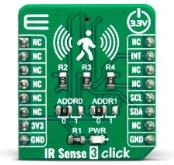
|
|
IR Sense 3 Click is the infrared sensor Click board™, designed to be used for the short range IR sensing applications. Unlike other pyroelectric sensors, it is able to sense environmental heat changes up to 1m, even through the glass. IR Sense 3 click has human approach detection algoritam that makes perfectly suited for many human presence detection applications. A programmable interrupt engine simplifies the software development and saves MCU cycles, that would be otherwise wasted on polling. The ability to sense IR through the glass allows an unconstrained design of the final product.
IR Sense 3 click is supported by a mikroSDK compliant library, which includes functions that simplify software development. This Click board™ comes as a fully tested product, ready to be used on a system equipped with the mikroBUS™ socket.
|
|
|
|
 |
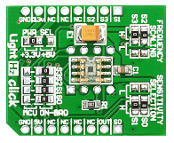
|
|
LightHz Click is an accessory board in the mikroBus form factor. The board features the TSL230BR programmable light-to-frequency converter. The output can be either a pulse train or a square wave (50% duty cycle), with frequency directly proportional to light intensity. Device sensitivity is selectable in three ranges, providing two decades of adjustment. The full-scale output frequency can be scaled by one of four preset values. The board features a voltage selection SMD jumper which determines whether it will operate on 5V or 3.3V. |
|
|
|
 |
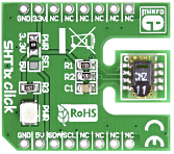
|
|
The SHT11 Click board is an accessory board in mikroBus form factor. It includes a SHT11 digital humidity and temperature sensor. A unique capacitive sensor element is used to measure relative humidity while the temperature is measured by a band-gap sensor. Serial I2C interface and factory calibration allow fast and easy system integration. The board is set to use the 3.3V mikroBus power supply by default, however soldering the PWR SEL SMD jumper to the 5V position will allow it to be used with 5V mikroBus systems. |
|
|
|
 |
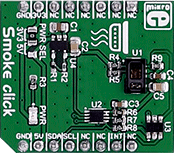
|
|
Smoke click carries the MAX30105 high-sensitivity optical sensor for smoke detection. The click is designed to run on either 3.3V or 5V power supply. It communicates with the target MCU over I2C interface with additional functionality provided by the INT pin on the mikroBUS™ line. |
|
|
|
 |
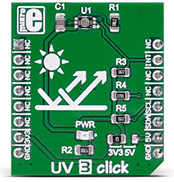
|
|
UV 3 click is an advanced ultraviolet (UV) light sensor with I2C protocol interface. The click carries VEML6070 UVA light sensor designed by the CMOS process. UV 3 click runs on either 3.3V or 5V power supply. |
|
|
|
 |
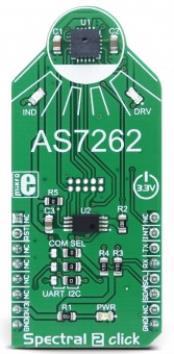
|
|
Spectral 2 click is a multispectral color sensing device, which uses the state-of-the-art sensor IC for a very accurate color sensing. The sensor on the Spectral 2 click provides multi-spectral sensing in the visible range of wavelengths from approximately 430nm to 670nm with the full width at half maximum (FWHM) of 40nm. Spectral click provides a direct reading of the six different color components with the 16bit precision, as well as the calibrated reading, that gives 32bit float values with an 8bit biased exponent and a 23bit fraction part, processed through the Spectral ID engine. The sensor also integrates two programmable LED channels with constant current drivers, useful for indication and for providing the backlight for the measured color object. |
|
|
|
 |

|
|
BT Audio click features Microchip's RN52 Bluetooth audio module. With onboard 3.5mm jacks for both a microphone and a speaker, this is a complete solution for streaming audio from a smartphone or PC over a wireless connection. |
|
|
|
 |
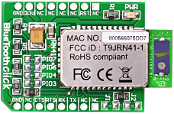
|
|
The BlueTooth Click board is an accessory board in the mikroBus form factor. It offers low power, highly economic Bluetooth radio for adding wireless capability to your products. The on-board RN-41 module with serial UART interface is simple and easy to use, with up to 100m range. The board is designed to use a 3.3V power supply only. |
|
|
|
 |
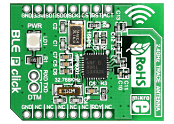
|
|
BLE P click carries an nRF8001 IC for adding a Bluetooth 4.0 (alternatively known as Bluetooth Low Energy) peripheral device to your design. BLE is an essential feature of today's "smart" gadgets. Its low energy consumption makes it ideal for sport and fitness devices, proximity sensors, smart watches and so forth. Newer smartphones, tablets and computers have hardware and software support for BLE. To get you started with BLE P click, an open-source BLE Android app is available (works on devices with hardware and software support for BLE). BLE P click communicates with the target board MCU through mikroBUS SPI (CS, SCK, MISO, MOSI), RDY and ACT lines. It uses a 3.3 V power supply only. |
|
|
|
 |
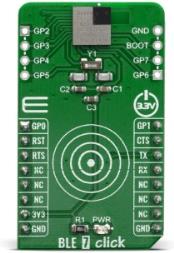
|
|
The BLE 7 click is a Click board™ witch provide BT/BLE connectivity for any embedded application. BLE 7 click based on the BGX13S22GA-V31, a SiP module from Silicon Labs with a buit-in antenna. Click board™ an ultra-small, high-performing, Bluetooth low energy module for easy integration of Bluetooth low energy connectivity (BLE) into various electronic devices. Given its features, this click can be used for health, sports, and wellness devices as well as Industrial, home, and building automation; and smart phone, tablet, and PC accessories.
BLE 7 click is supported by a mikroSDK compliant library, which includes functions that simplify software development. This Click board™ comes as a fully tested product, ready to be used on a system equipped with the mikroBUS™ socket.
|
|
|
|
 |
|
|
 |
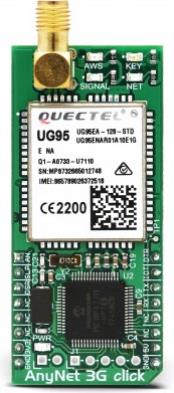
|
|
AnyNet 3G click is a cellular to AWS gateway device, which provides developers with the complete solution for various IoT applications, by using the AWS IoT and Cloud Storage services for the data storage, analyzing and processing. AnyNet click board™ provides a secure connection with the AWS over the air (OTA), by utilizing the Quectel UG95 3G module, offering worldwide UMTS/HSPA and GSM/GPRS/EDGE coverage. An Eseye embedded sim card can work with more than 235 cellular operators from all over the world. The AnyNet 3G click can be used as an AWS IoT button with almost no configuration. |
|
|
|
 |
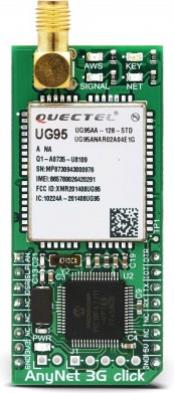
|
|
AnyNet 3G-AA click is a cellular to AWS gateway device, which provides developers with the complete solution for various IoT applications, by using the AWS IoT and Cloud Storage services for the data storage, analyzing and processing. AnyNet click board™ provides a secure connection with the AWS over the air (OTA), by utilizing the Quectel UG95-AA 3G module, offering UMTS/HSPA coverage for the North American region, Eseye ES4623 embedded SIM card, that can work with all the major cellular operators within the NA region. The AnyNet 3G click can be used as an AWS IoT button with almost no configuration.
AnyNet 3G-AA click comes supplied with the start-up package - free activation through the AWS, unique ID number of the embedded SIM card and six-month cellular connectivity services of up to 5000 messages to the AWS cloud. With the AnyNet 3G click, users get the unique level of integration with the AWS IoT services.
Note: Before the purchase of AnyNet 3G click, please contact Eseye and check for the coverage and support of embedded SIM cards from your local provider. Opening an AWS account and subscribing to Eseye marketplace is mandatory to work with this click board. |
|
|
|
 |
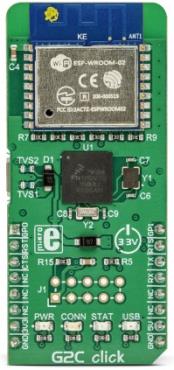
|
|
Go to Cloud (G2C) click is a gateway Click board™ which provides a simple and reliable connection to the Click Cloud platform, a cloud-based rapid prototyping environment, hosted by MikroElektronika. Go to Cloud (G2C) click offers an unprecedented simplicity for adding Click Cloud connectivity to any embedded application, by utilizing the simple UART interface: it can be configured and managed using a minimal set of well-documented AT commands. With the simplicity in mind, Go to Cloud (G2C) click represents an ideal solution for accessing user-friendly and intuitive Click Cloud, a simple yet powerful rapid prototyping cloud solution.
|
|
|
|
 |

|
|
XBee click carries the Xbee and Zigbee-compliant XB24CZ7PIS-004 module with a PCB antenna from Digi International. The module provides wireless connectivity to end-point devices in ZigBee mesh networks. The module has a wireless range of up to 60 meters indoors, or up to 1200m in outdoor line-of-sight applications. The RF data rate is up to 250,000 Kbps. The board can communicate with the target MCU either through the mikroBUS UART interface (TX, RX, RTS i CTS), or SPI (MISO, MOSI, SCK, CS). Additional functionality is provided by Reset, and ATTN-DTR pins. To simplify deployment, the click board features a pushbutton to issue simple configuration commands with subsequent button presses. Uses 3.3V power supply only. |
|
|
|
 |
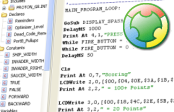
|
|
Proton Development Suite combines the Proton Plus Compiler with an IDE and Virtual Simulation Environment, creating a PIC microcontroller BASIC development environment suitable for both hobbyists and professionals. |
|
|
|
 |
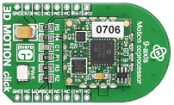
|
|
3D Motion click carries Microchip’s MM7150 9-axis sensor fusion motion module. It's a complete self contained solution comprising a 3-axis accelerometer, a gyroscope, a magnetometer, and a SSC7150 motion coprocessor. The motion coprocessor has sensor fusion alghoritms that take raw data from individual sensors and filter, compensate and combine them together. The resulting output provides reliable and accurate positioning and orientation information. The board communicates with the target MCU through the mikroBUS I2C interface; WAKE and RESET pins are also used (in placed of default mikroBUS AN and RST respectively), as well as an interrupt pin (INT). |
|
|
|
 |
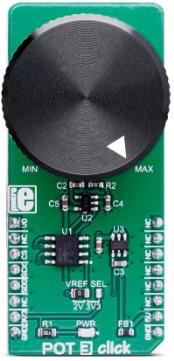
|
|
POT 3 Click is a Click board™ with the accurate selectable reference voltage output. By employing a high-quality 11mm, metal shaft potentiometer, this Click board™ can provide very accurate voltage output. The onboard high-resolution 12-bit ADC can detect even the smallest move, faithfully capturing the smoothness of the slider movement, while digitizing its position. POT 3 Click is also equipped with the SMD jumper, which allows the maximum reference voltage to be selected between two typically used values: 2.048V or 3.3V. The output is buffered with a rail-to-rail buffering operational amplifier, which provides constant input and output impedance.
POT 3 Click is supported by a mikroSDK compliant library, which includes functions that simplify software development. This Click board™ comes as a fully tested product, ready to be used on a system equipped with the mikroBUS™ socket.
|
|
|
|
 |
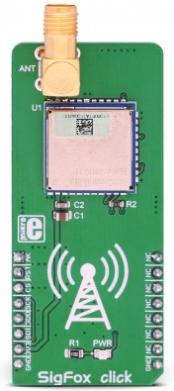
|
|
SigFox click is a device which carries the SN10-11, a fully integrated Sigfox™ certified module by InnoComm, allowing connection to a low power wide area network (LPWAN) that enables communication utilizing the Industrial, Scientific, and Medical (ISM) radio frequency band. The Sigfox network is a star topology network, specifically designed for the Internet of Things (IoT) applications. It uses an ultra-narrow frequency band, able to penetrate through the objects and cover large distances, making it a perfect choice for various industry-specific applications, such as the sensors networking in agriculture.
Note: Sigfox click is intended to be used in the RCZ1 (Europe region).
More information about the Sigfox network coverage, and other related information can be found at the official Sigfox site.
Also, if you are looking for a Sigfox click that covers other regions, please check out our other Sigfox click products. |
|
|
|
 |
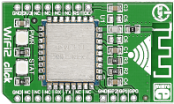
|
|
WiFi2 click is an affordable solution for adding WiFi functionality to your design, especially suited for IoT applications. The board carries the HLK-M30 WiFi module that’s easy to configure (you can set it up with either a static or dynamic IP address), and it can work both as a TCP/IP client or server. In addition, it supports multiple authentication mechanisms and network protocols. The board communicates with the target board microcontroller through UART (TX, RX), RST and ANT lines. It's designed to use a 3.3V power supply. |
|
|
|
 |

|
|
Magic RFID Click is a compact add-on board that contains an embedded RFID module. This board features the M6E-NANO, UHF RFID module with ultra-low power consumption from JADAK. Supporting the EPC Gen2V2 and ISO 18000-63 standard, the M6E-NANO module is available for global use. It operates in the Ultra High Frequency (UHF) band in a range from 859 up to 930MHz and can be used for write/read applications. This module provides an output power of +27 dBm, adjustable in 0.01 dB steps with a read speed of 200 tags/sec and a read range of up to 4.5m. This Click board™ is ideal for a wide range of applications in the logistics, security access points, manufacturing, tag commissioning stations, and more.
Magic RFID Click is supported by a mikroSDK compliant library, which includes functions that simplify software development. This Click board™ comes as a fully tested product, ready to be used on a system equipped with the mikroBUS™ socket.
|
|
|
|
 |
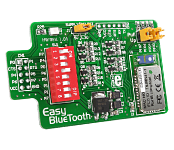
|
|
The EasyBlueTooth Board is a low-cost solution that enables your device to easily implement wireless Bluetooth communication. Board is equipped with low-power, highly economic RN-41 module, compliant with Bluetooth 2.1/2.0/1.2/1.1 specification that can operate up to 100m distance. |
|
|
|
 |
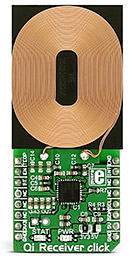
|
|
Qi Receiver click is based on the P9025AC 5W Qi wireless power receiver integrated circuit, with the advanced Foreign Object Detection (FOD) feature, from IDT. The click utilizes the principles of the inductive coupling for the purpose of wireless power transfer. Recently, the WPS Qi wireless power transfer standard is becoming widely used, for example - wireless charging of the batteries on many Qi wireless power charging compliant devices.
Qi Receiver click is well-suited for a wide range of applications, including cell phones, tablets, PC peripherals, medical devices, small hand-held devices, in robotics, embedded electronics, etc.
Note: Qi Receiver click has to be placed near the suitable Qi Transmitter, also known as the charging pad, to successfully harvest the transmitted power. |
|
|
|
 |
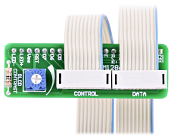
|
|
For Samsung KS0108 type GLCD.
The GLCD 128X64 Adapter Board is an accessory board used to connect a 128x64 graphic LCD to your development board or prototype device. The board includes a potentiometer for GLCD contrast adjustment. |
|
|
|
 |
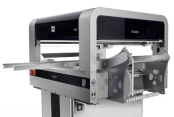
|
|
Neoden 4 Pick-and-Place Machine
|
|
|
|
 |
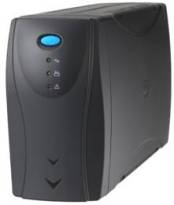
|
|
An Uninterruptible Power Supply (UPS) is an electrical apparatus which provides backup power to a load when the normal power source fails. This UPS will provide near instantaneous protection from power interruptions, by using energy that is stored in a battery to substitute the normal supply. This UPS can be supplied either with or without a 7Ah or 9Ah 12V battery (these batteries are the same type used in alarm systems and are available from most electronics stores - easily interchangeable/replaceable if necessary), providing an average of 20 or 30 minutes back-up supply to one PC.
This UPS also provides surge protection - on an unstable power grid, interruptions or load shedding, as well as lightning strikes, can cause spikes which may result in damage to equipment. This UPS has lightning/surge protection up to 175 Joules.
The units are supplied with a power supply cable for the UPS, as well as two cables for supplying equipment with power from the UPS. A legacy RS232 serial cable is also included in the package.
Lead-time of approximately 1-3 days on additional stock, approximately 40 units in stock with supplier. |
|
|
|
 |
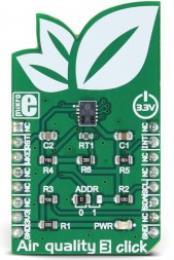
|
|
Air quality 3 click is the air quality measurement device, which is able to output both equivalent CO2 levels and total volatile organic compounds (TVOC) concentration in the indoor environment. The Click board™ is equipped with the state-of-the-art air quality sensor IC, which has an integrated MCU and a specially designed metal oxide (MOX) gas sensor microplate, allowing for high reliability, fast cycle times and a significant reduction in the power consumption, compared to other MOX sensor-based devices. The Click board™ is also equipped with a temperature compensating element, which allows for increased measurement accuracy. |
|
|
|
 |
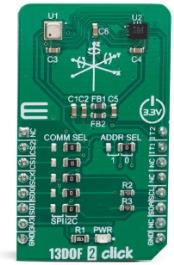
|
|
13DOF 2 click is an advanced 13-axis motion tracking Click board™, which utilizes two different sensor ICs onboard: BME680, Volatile Organic Compounds (VOCs), humidity, pressure and temperature sensor and BMX160, a 9-axis sensor consisting of a 3-axis, low-g accelerometer, a low power 3-axis gyroscope and a 3-axis geomagnetic sensor. Both integrated sensor ICs are made by Bosch Sensortec, featuring the state-of-the-art sensor technology processes, in order to fulfill the requirements for immersive gaming and navigation applications, which require highly accurate sensor data fusion. Besides that, 13DOF 2 click is also perfectly suited for use in many other applications such as mobile phones, tablet PCs, GPS systems, Smart watches, Sport and fitness devices, and many more.
13DOF 2 click is supported by a mikroSDK compliant library, which includes functions that simplify software development. This Click board™ comes as a fully tested product, ready to be used on a system equipped with the mikroBUS™ socket.
|
|
|
|
 |

|
|
WiFi PLUS Click is an accessory board in the mikroBUS form factor. It is a compact solution for adding WiFi communication to your device. It features the MRF24WB0MA - 2.4GHz, IEEE std. 802.11 - compliant module as well as the MCW1001 companion controller with on-board TCP/IP stack and 802.11 connection manager. WiFi PLUS click communicates with target boards via a UART interface. It is designed to use a 3.3V power supply only. It also features an option to achieve low power consumption. |
|
|
|
 |
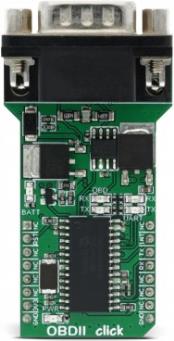
|
|
OBDII click offers a unique opportunity to tap into the car diagnostic systems. It features the STN1110 Multiprotocol OBD to UART Interface, developed by the ScanTool technologies. This click can be used for the communication with the Electronic Control Unit (ECU) of a vehicle, via several different OBD II diagnostic protocols such as CAN, K LINE, L LINE and J1850. The STN1110 IC is used to process requests sent by the MCU via the UART interface and return back the responses from the ECU network nodes |
|
|
|
 |
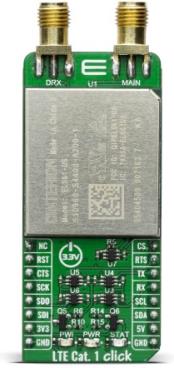
|
|
LTE Cat.1-US click is a Click board™ based on Thales Cinterion® ELS61 wireless module that delivers highly efficient Cat 1 LTE connectivity for M2M IoT solutions offering seamless fall back to 2G and 3G networks. The best in class solution enables M2M optimized speeds of 10Mbit/s download and 5Mbit/s uplink making it ideal for the vast number of M2M and industrial IoT applications that are not dependent on speed but that requires the longevity of LTE networks, while still providing 3G and 2G connectivity to ensure complete population and geographic coverage as LTE rolls out.
The LTE Cat.1-US click is supported by a mikroSDK compliant library, which includes functions that simplify software development. This Click board™ comes as a fully tested product, ready to be used on a system equipped with the mikroBUS™ socket.
|
|
|
|
 |
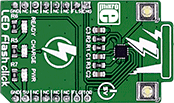
|
|
LED Flash click functions as a high power LED flash, and carries the CAT3224 flash LED driver. The click is designed to run on a 5V power supply. It communicates with the target microcontroller over the following pins on the mikroBUS™ line: AN, RST, PWM, and INT. |
|
|
|
 |
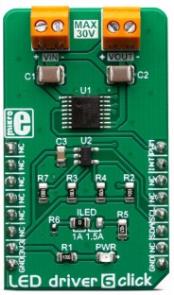
|
|
LED driver 6 Click is a high brightness LED or LED strip driver, designed to be used in tunable Smart Connected Lighting (SCL) applications. It is based on the AL1781, a single-channel PWM dimmable linear LED driver. By utilizing a high-frequency E-flicker free technology with Deep Dimming capability, it can be used in single-channel tunable white SCL applications. The AL1781 IC features the Adaptive Thermal Management scheme, reducing the power dissipation. It also integrates an abundance of protection features for increased reliability: undervoltage, open or short circuit at the output, and thermal protection.
LED driver 6 Click is supported by a mikroSDK compliant library, which includes functions that simplify software development. This Click board™ comes as a fully tested product, ready to be used on a system equipped with the mikroBUS™ socket.
|
|
|
|
 |

